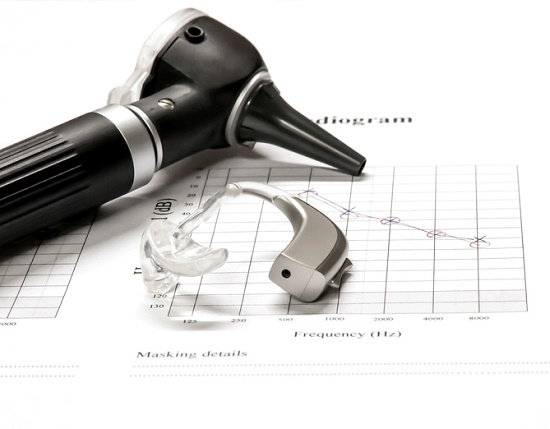
Are you considering purchasing hearing aids?
If so, it can seem overwhelming at first. There are countless options out there, and the confusing terminology doesn’t help.
That’s why we’re going to describe the most common and important terms, so when you talk with your hearing professional you’ll be prepared to find the best hearing aid for you.
Hearing loss and testing
High-frequency hearing loss – this is the most prevalent kind of hearing loss. Individuals with high-frequency hearing loss have the most difficulty hearing higher frequency sounds, including the sounds of speech.
Sensorineural hearing loss – this type of hearing loss comes about when there is injury to the nerve cells of the inner ear. This is the most common form of permanent hearing loss triggered by being exposed to loud noise, aging, genetics, or other health problems.
Bilateral hearing loss – hearing loss in both ears, which may be symmetrical (the same level of loss in both ears) or asymmetrical (varied levels of loss in each ear). Bilateral hearing loss is almost always best treated with two hearing aids.
Audiogram – the chart that provides a visual representation of your hearing test results. The vertical axis measures decibels (volume) and the horizontal axis measures frequencies (pitch). The hearing professional captures the lowest decibel level you are able to hear at each frequency. If you require higher volumes to hear higher frequencies, your audiogram will show a pattern of high-frequency hearing loss.
Decibel (dB) – the unit used to measure sound level or intensity. Ordinary conversation registers at about 60 decibels, and prolonged exposure to any sound more than 80 decibels could result in irreversible hearing loss. Seeing that the scale is logarithmic, an increase of 6-10 decibels doubles the volume of the sound.
Frequency – represents pitch as measured in hertz. Picture moving up the keys on a piano, from left to right (low-frequency/pitch to high-frequency/pitch).
Threshold of hearing – The lowest decibel level that can be detected at each individual frequency.
Degree of hearing loss – Hearing loss is generally labeled as mild (26-40 dB loss), moderate (41-55), severe (71-90), or profound (91+).
Tinnitus – a constant ringing or buzzing in the ears when no external sound is present. Normally a sign of hearing damage or loss.
Hearing aid styles
Digital hearing aid – hearing aids that incorporate a digital microchip, used to custom-program the hearing aids to complement each person’s unique hearing loss.
Hearing aid style – the type of hearing aid specified by its size and location relative to the ear. Core styles consist of behind-the-ear, in-the-ear, and in-the-canal.
Behind the ear (BTE) hearing aids – the majority of hearing aid parts are contained inside of a case that sits behind the ear, connected to an earmold by a clear plastic tube. Mini-BTE hearing aids are also available.
In the ear (ITE) hearing aids – the hearing aid components are enclosed within a case that fits in the outside part of the ear.
In the canal (ITC) hearing aids – the hearing aid components are enclosed in a case that fits within the ear canal. Completely-in-the-canal (CIC) hearing aids are also obtainable that are practically invisible when worn.
Hearing aid parts
Earmold – a piece of plastic, acrylic, or other pliable material that is formed to the contours of the individual’s ears, used for the fitting of hearing aids.
Microphone – the hearing aid part that picks up sound in the environment and converts the sound waves into an electrical signal.
Digital signal processor – a specialized microprocessor inside of a hearing aid that can manipulate and enhance sound.
Amplifier – the component of the hearing aid that boosts the volume of sound.
Speaker – the hearing aid part that delivers the magnified sound to the ear.
Wireless antenna – available in specific hearing aids, permitting wireless connection to compatible equipment such as mobile phones and music players.
Hearing aid advanced features
Variable programming – hearing aid programming that allows the individual to adjust sound settings depending on the environment (e.g. at home versus in a crowded restaurant).
Directional microphones – microphones that can focus on sound originating from a specific location while minimizing background noise.
Telecoils – a coil installed inside of the hearing aid that allows it to connect with wireless signals emanating from telephones, assistive listening devices, and hearing loops installed in public venues.
Noise reduction – functionality that helps the hearing aid to differentiate speech sounds from background noise, resulting in the augmentation of speech and the inhibition of distracting noise.
Bluetooth technology – enables the hearing aid to communicate wirelessly with a variety of devices, such as cell phones, computers, audio players, and other compatible devices.
Uncertain of which features you need, or which you could live without? Let us help you find the best hearing aid for your distinct needs. Give us a call today!
